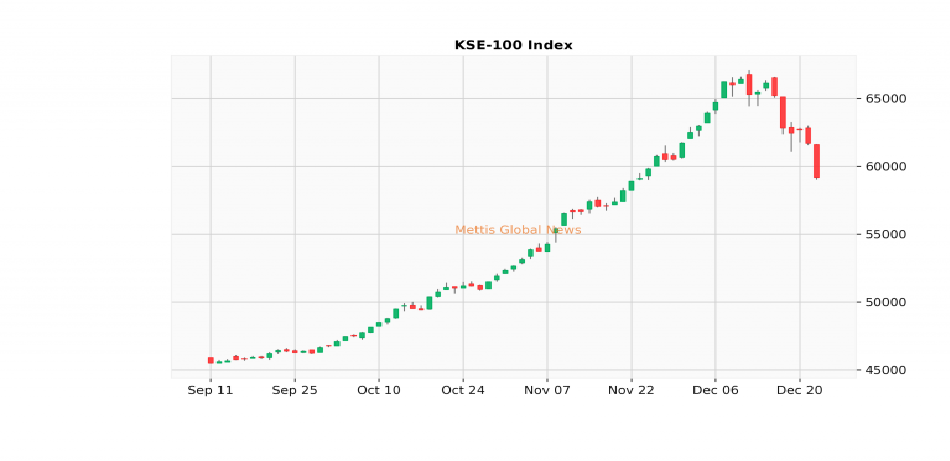January 04, 2024 (MLN):A sudden departure of Indices from the predicted trajectory is not an unusual incident in the stock market. We have seen this in the past and will continue to experience it in the future too. But when the departure is premature and strikingly downward, it raises the adrenaline of investors. No spontaneous action to contain financial damage seems working. The article is about how to escape from such a situation almost unscathed.
“Stock market can be predicted”. Despite being contentious, the market is religiously predicted by Fundamental/Technical Analysts and is accepted by investors to orchestrate their Investment Plans accordingly.
An investment plan crafted on prediction is presumed to be as effective as one extrapolated from stochastic modeling. As it is considered to be an outcome of conscious, thoughtful, and organized actions, and not just an outcome of technical analysis, thereby, is justifiable to be treated as a ‘Deliberated Investment Strategy.’

Usually, the market moves in tandem with the prediction with little deviation along the predicted path. Such deviations are taken as the market norm. But not when it suddenly nose-dived, particularly when it is considerably away from the predicted zenith. Such a premature fall not only runs investors’ adrenaline high but also raises doubt about the correctness of the prediction.
Who should be blamed for an unplanned market move? The Fundamental/Technical Analysts, who have excitedly been proclaiming a new high? Investors who blindly believe in those prophecies? Or the Technical Analysts for not issuing a timely warning of a possible U-turn by the market? Credit for ineptness may go to all of them. Stock Market Pundits for hibernating once predicted the top and Investors for ignoring the emerging developments capable of changing the market direction.
No doubt that events that cause sudden directional changes in the market are extraneous, independent, and beyond the control of investors but not beyond their observations. This alone is enough to envision an investment strategy that may potentially be capable of protecting investors from the sudden fall in the market.
Irrespective of how sudden and intense the reversal is, it grows before a fully blossom. This leaves time and space to identify factors that may cause a directional change in the market and their disruptive nature. Thus, allowing us to evolve an equally Disruptive Investment Strategy in such a situation.
A Disruptive Investment Strategy is an Emerging Investment Strategy in actuality. It evolves in response to emerging threats or opportunities such as changes in interest rates, political situations, regulatory framework, leverage, open interest positions, etc., etc. for stock investors.
The Emergent Investment Strategy is meant to address a specific situation and, therefore, is unique and independent of the Deliberated Investment Strategy. It regulates the Deliberated Investment Strategy and maintains its relevance to a changing operating environment. It keeps the latter resilient and assures of achieving of Investment goals originally intended.
How an investor can make a paradigm shift from a static Deliberated Investment Strategy to an Emergent Investment Strategy? The framework given below may be employed for practicing an Emerging Investment Strategy in parallel to a Deliberated Investment Strategy.
- Predict or use a Prediction for Stock Market Future:
Either use your prediction or the prediction of some reputable market pundits. Choose the one that seems more realistic. Examine it for noises within and fine-tune it accordingly.
- Formulate an Investment Strategy Around the Prediction:
This would be your Deliberated (Intended) Investment Strategy to start with. Adhere to it unless there are predomination of changes within operating environments.
- Constantly Scan Operating Environments to Identify a Possible Change:
Economic and political developments, FIPI, LIPI, Open Interest of Future Contracts, and margin Financing constitute external environments for stock investment and require constant monitoring to identify changes when they are still in bud.
- Shortlist Changes That Can Potentially Affect the Stock Market:
Perceived how unfurl of changes in the external environment can affect investment sentiments and classify them in terms of intensity. Using of 80-20 rule could be helpful in this respect.
- Prioritize Short-Listed Changes According to Their Intensity to Affect the Market:
Prioritization of changes should be based on terms of the quantum of valuation gains/losses on investment.
- Align Deliberated Investment Strategy Accordingly:
Develop strategies to respond to emerging threats and opportunities. These Strategies are stand-alone, however, supportive of achieving the Overall Investment Goals.
Are you ready for a paradigm shift?
Disclaimer: The views and analysis in this article are the opinions of the author and are for informational purposes only.
Copyright Mettis Link News
Posted on: 2024-01-04T10:15:07+05:00

![]()





 Weekly Forex Reserves
Weekly Forex Reserves